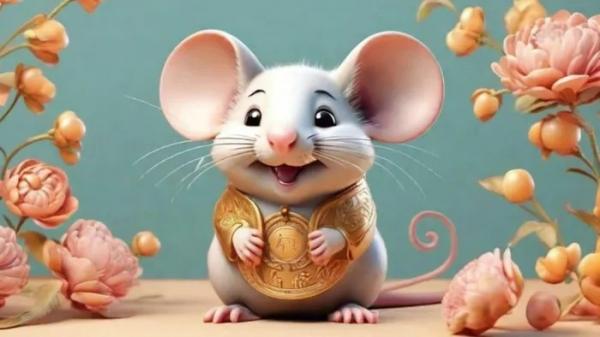Whenever we think of Disney princesses, we can’t help but think of their signature dresses. However, while we are used to seeing Belle in her yellow costume when dancing with the Beast, the reality is that, in the 18th century, fashion had nothing to do with what we see onscreen. That’s why we asked artificial intelligence to design the correct versions of these characters’ dresses, and now we are sharing the results with you.
1. Snow White in Germany’s 15th century fashion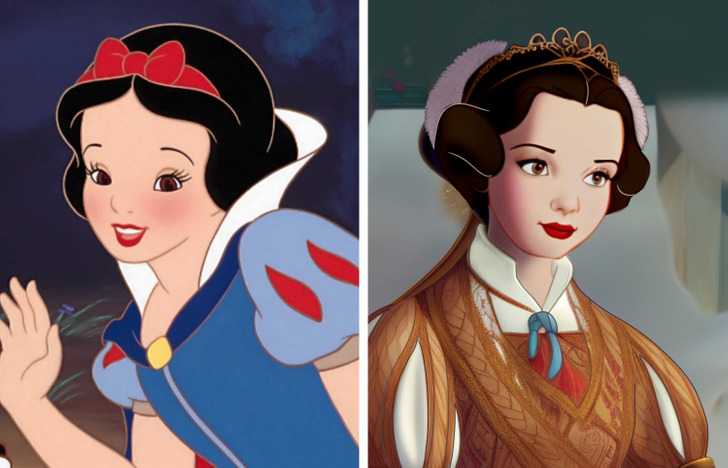
The original tale, published in 1937, was inspired by Margaretha von Waldeck, a German countess born in 1533, which suggests that the story is set in that period.Unlike the dress shown by the Disney animators, in the 15th century, women wore much more extravagant, high-waisted garments with layers of linen underneath. Another major difference with the Disney design is the sleeves. In reality, women’s garments had detachable long sleeves that flared out at the shoulders.
2. Aurora in France’s 14th century fashion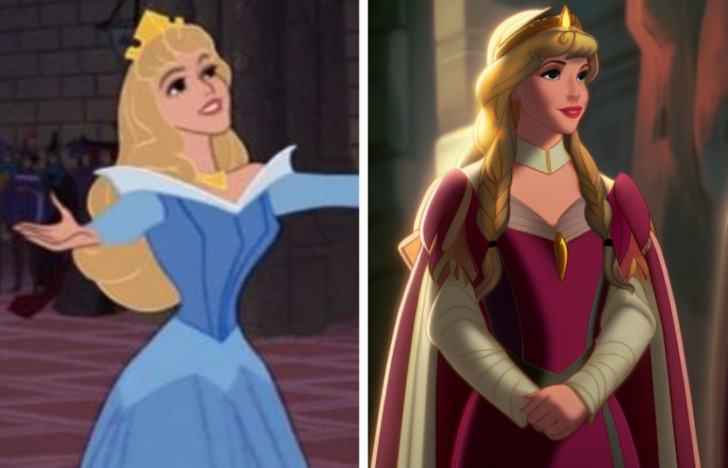
The best-known version of this tale is credited to Charles Perrault in his 1697 book Histoires ou contes du temps passé, but there are records of the story from a few centuries ago, between 1330 and 1344 in Perceforest. Therefore, it could be said that the protagonist lived around that time.
During this period, women wore dresses rather tight to the silhouette and did not want to widen their hips with wide skirts. On the contrary, the dressmakers of that era tried, as much as possible, to avoid adding volume to that area. Instead, the more formal models wore long trains. In addition, it was common to wear gowns over the attire that fell over the shoulders as layers.
3. Cinderella in Germany’s 19th century fashion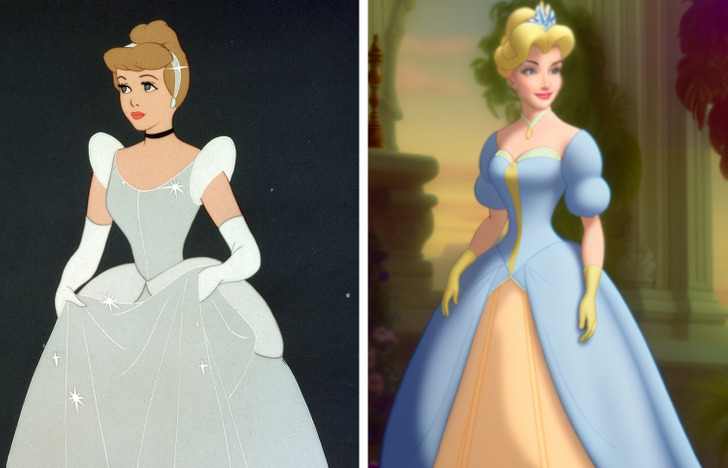
The Brothers Grimm published the best-known version of this tale in their 1812 collection Grimms’ Fairy Tales. However, the oldest records of this story date back to the 7th century BC and 1st century AD.
Since, thanks to the Brothers Grimm, Cinderella would be remembered as a tale of German tradition, we will describe how she should have looked in the 19th century. At this time, dresses began to become increasingly extravagant and theatrical, with a growing trend until the end of Romanticism.
4. Jasmin in Middle Eastern fashion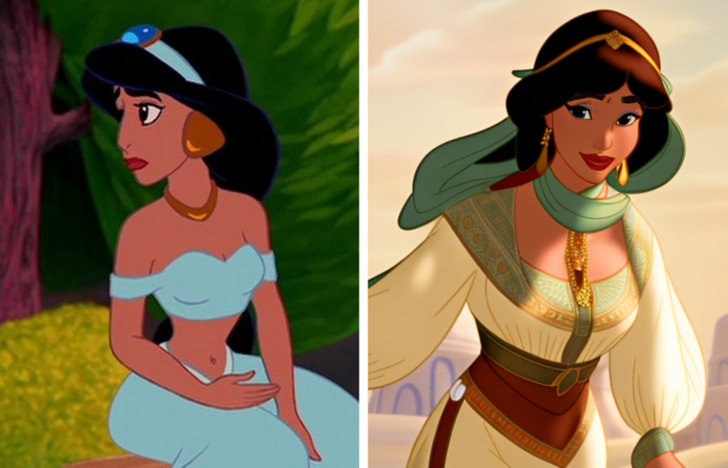
Originally, Aladdin is one of the best-known stories in One Thousand and One Nights. As for the story’s setting, the first lines of the tale say, “In some of the cities of China.” However, such a setting is not mentioned again in the rest of the story, and some elements may suggest that Aladdin’s story takes place somewhere in the ancient Near East.
It is also worth noting that the story was included in the book thanks to the Syrian writer Hanna Diyab, and, in ancient Arabic, the term “China” was used to refer to distant and exotic lands. Because of this, and to follow the traditional depiction of the story, we will describe what Jasmine’s attire should have looked like in the ancient Near East.
Attire in this region has evolved very little over the years, as its purpose remains the same: to protect from the harsh climate and sand. As a result, the differences between countries are also quite subtle.
The basic garments were a shirt with sleeves, loose pants and a tunic. Then, over this cloak, the jellaba, a dress with long sleeves and a skirt with slits on the sides, was added. For the most part, all this is in cream colors and embroidered with bright fabrics.
5. Tiana in U.S.’s 1926 fashion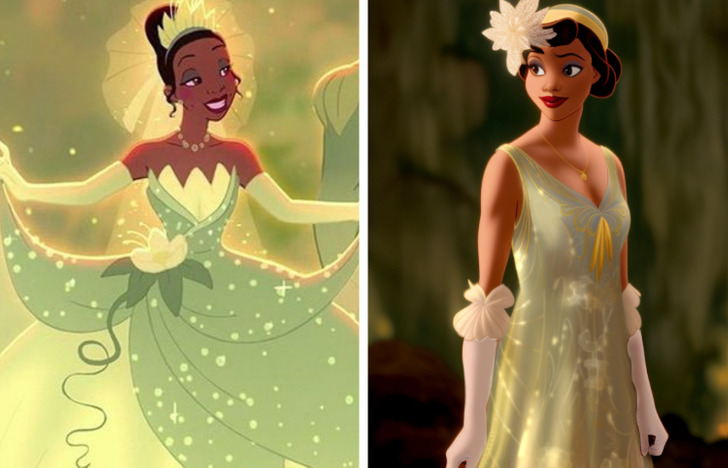
The original story is German, as the Brothers Grimm officially published it in 1812, and they took the idea from the country’s oral tradition. However, Disney’s 2009 adaptation is a particular case since it was loosely based on The Frog Princess, an adaptation of the original tale published by E. D. Baker in 2002.
Therefore, as it is a story with such apparent changes from the original tale, we will describe how Tiana’s attire should have looked, according to the Disney adaptation, in the 1920s and the United States.
Fashion at the time evolved in opposition to previous trends. It was all about “letting yourself go”, so the dresses were loose, low-waisted. They barely showed the woman’s silhouette and reached almost the ankles, sometimes the knees.
6. Bella in France’s 18th century fashion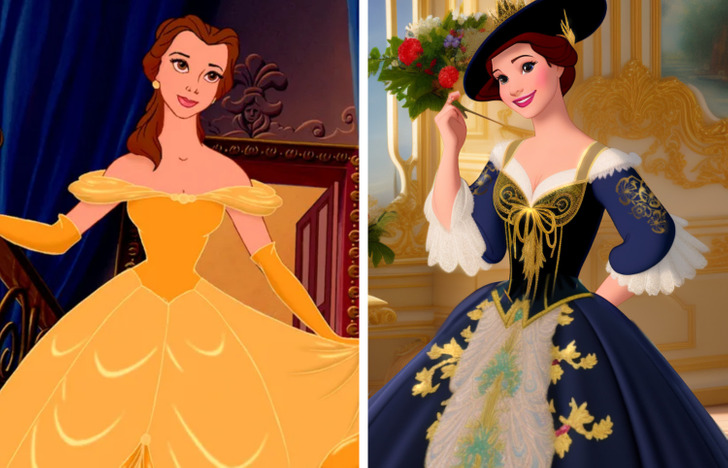
Disney based one of its most famous animated classics on the story, La Belle et la Bête, written by French novelist Gabrielle-Suzanne Barbot de Villeneuve in 1740. One would think that the story takes place in the same period it was written. Then, Bella should have had very different dresses, according to the French fashion of the 18th century.
A typical characteristic of the dresses of the time was the fitted bodice. They had a square neckline, large ribbon bows, and lace and flowers on the front. As for colors, pastel shades were chosen to give an elegant and youthful appearance. The sleeves were flared and ended at the elbows to reveal the sleeves of the nightgown worn under the dress.
7. Merida in Scotland’s 10th century fashion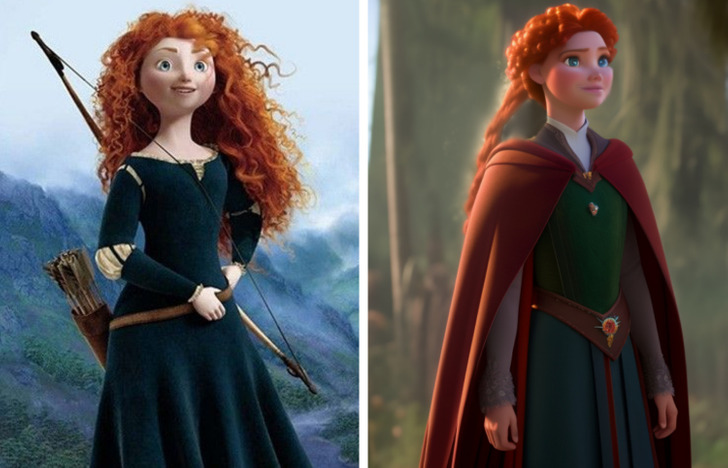
Brave is a Pixar original story released in 2012 and set in medieval Scotland. Merida’s costumes in the film are much more faithful to reality than those of other Disney princesses. However, some elements of medieval European fashion are not shown.
For example, women’s dresses of that time usually included tunics. On the outside, a long cloak could be worn as a coat fastened to the inner clothing with a belt at the waist. In addition, socks may have been worn on the legs and veils on the head.
8. Rapunzel in Germany’s 17th century fashion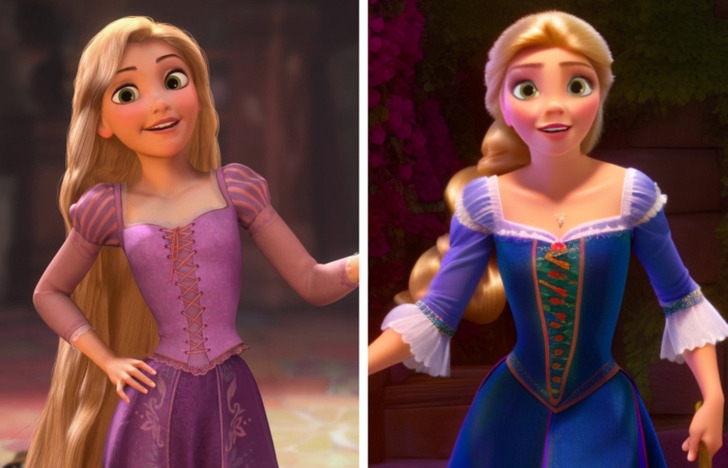
Tangled, released in 2010, is based on the fairy tale Rapunzel, published by the Brothers Grimm in 1812, who, in turn, found it on the French story Persinette, written by Charlotte-Rose de Caumont de La Force in 1698.
Taking that into account, the story of the lost princess is set at the end of the 17th century in Germany. Back then, women wore low-cut corsets, broad at the shoulders and narrow at the waist. The sleeves were wide and loose and ended at the elbow while the skirt reached down to the feet. However, over time, the length of the skirt was reduced to reveal the petticoat.
9. Meg in Ancient Greece’s fashion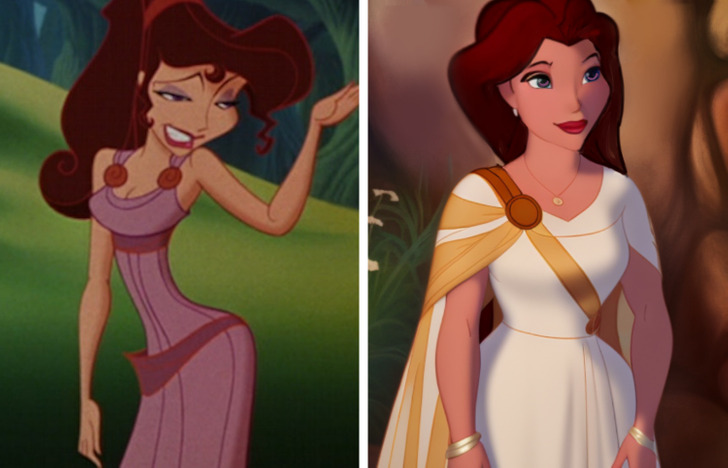
Hercules revolves around the adventures of the Greek demigod, and while it’s not explicitly said that it takes place in Ancient Greece, it can be inferred because of certain things mentioned throughout the film.
Greek women back then wore relatively simple and loose-fitting clothes. Its primary purpose was functional, so it did not seek to bestow identity. Their clothing consisted of two pieces: an undergarment and a cape. The major difference between the women’s and men’s clothing was that the ladies’ tunic went down to the ankles, while the men’s only went down to the knees.
The colors were often neutral, but tailors would add decorative borders in bright shades. However, the latter was only common among upper-class people. Purple, in particular, was considered a most notable sign of wealth in clothing due to its price.
10. Elsa in European 19th century fashion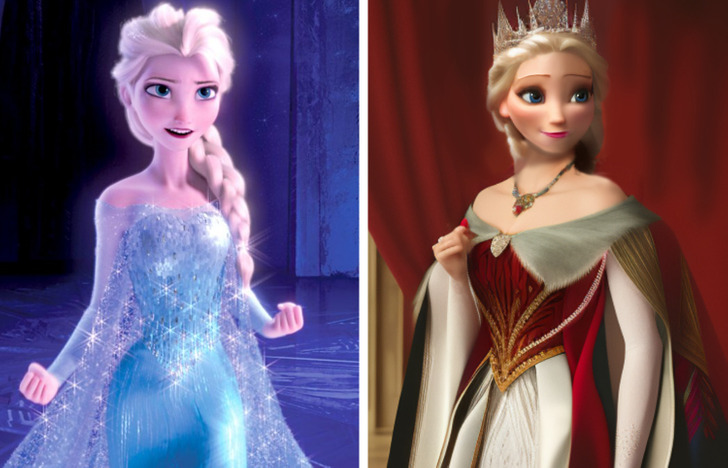
Frozen is loosely based on the fairy tale The Snow Queen, published by Danish writer Hans Christian Andersen in 1844. So, considering the source of inspiration for Disney’s story, it could have been set in the 19th century, somewhere in Europe, since the kingdom of Arendelle is fictional.
Assuming the analysis is correct, Elsa must have had a similar style to Cinderella’s since fashion among European countries did not vary much. In this sense, she must have had a much more defined structure, a wide skirt and extravagant decorations.




